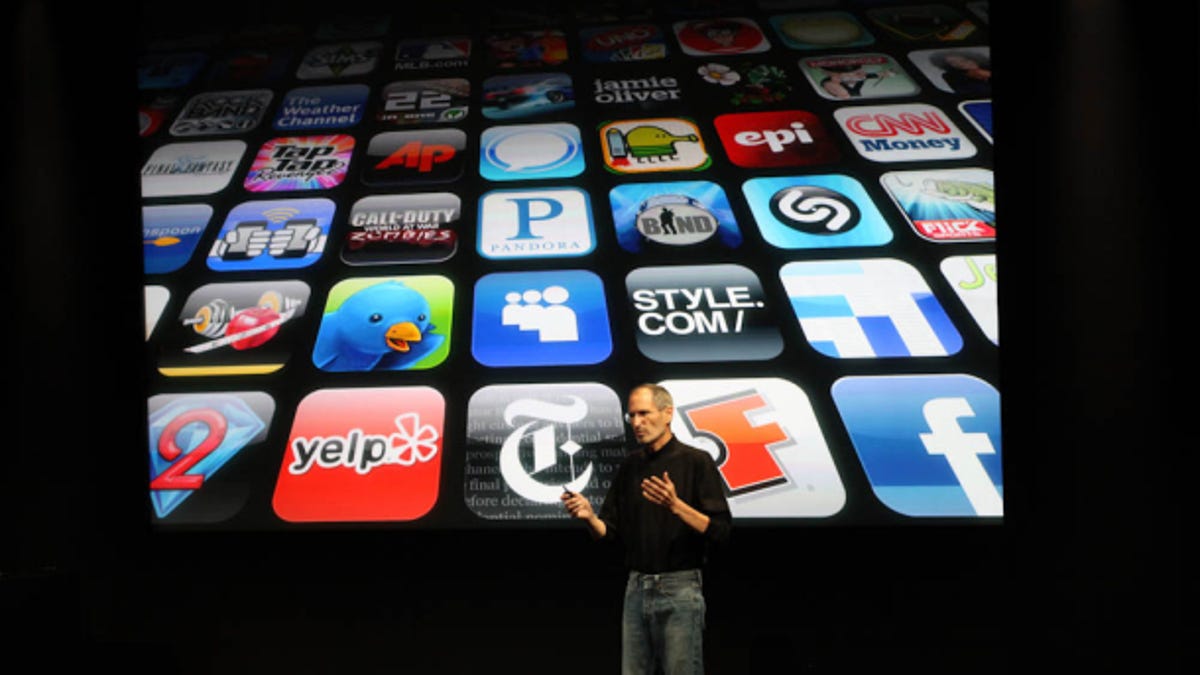How Steve Jobs' 7-inch flip-flop worked to Apple's advantage
It was not long ago that the company's former leader publicly trashed the 7-inch tablet as a wrongheaded tech idea. Then he had an epiphany.

With the announcement of a "mini" iPad with a 7.9-inch screen, Apple trotted out a smaller version of its best-selling iPad to help it compete more directly with rival 7-inch tablets offered by Google and Amazon as well as an 8.9-inch tablet computer sold by Barnes & Noble.
It also contradicted everything that Steve Jobs ever said publicly about smaller-sized tablet computers as Apple embraces a category that its former CEO told us was a loser from the get-go. I'm not exaggerating for effect. Here's Jobs speaking in October 2010 about why 7-inch screens would never cut it:
While one could increase the resolution to make up some of the difference, it is meaningless unless your tablet also includes sandpaper, so that the user can sand down their fingers to around one-quarter of their present size. Apple has done expensive user testing on touch interfaces over many years, and we really understand this stuff.There are clear limits of how close you can place physical elements on a touch screen, before users cannot reliably tap, flick or pinch them. This is one of the key reasons we think the 10-inch screen size is the minimum size required to create great tablet apps.
But as we learned during this summer's Apple-Samsung trial, what Jobs told the rest of us and what he believed weren't always the same. This revealing January 2011 e-mail from Eddie Cue, head of Apple's Internet software and services, to current CEO Tim Cook, iOS software chief Scott Forstall, and marketing chief Phil Schiller presents Jobs as anything but dismissive of the concept:
Having used a Samsung Galaxy, I tend to agree with many of the comments below (except moving off the iPad). I believe there will be a 7" market and we should do one. I expressed this to Steve several times since Thanksgiving and he seemed very receptive the last time. I found email, books, facebook and video very compelling on a 7". Web browsing is definitely the weakest point, but still usable.
So was Jobs lying to throw Google et. al off the scent? Maybe, maybe not. Take a gander at the full text of his 7-inch screen rant:
I'd like to comment on the avalanche of tablets poised to enter the market in the coming months.He had legit concerns over so-called tweeners -- Jobs described them as "too big to compete with a smartphone; too small to compete with an iPad." In time, though, he had a change of heart because enough consumers liked the smaller, less expensive units. That was the sign of smart management. Jobs did not need an epiphany, but when the data tell a story which contradicts intuition or informed hunch, there's nothing wrong with changing your mind. Over the course of the last three decades, there is no shortage of product flops like Microsoft Bob or the Audrey web-surfing machine, borne on little more than guesswork about what people wanted, which never ought to have seen the light of day.First, it appears to be just a handful of credible entries. Not exactly an avalanche. Second, almost all of them use seven-inch screens, as compared to the iPad's near 10-inch screen.
Let's start there. One naturally thinks that a seven-inch screen would offer 70% of the benefits of a 10-inch screen. Unfortunately this is far from the truth. Screen measurements are diagonal. So that a seven-inch screen is only 45% as large as iPad's 10-inch screen. You heard me right: Just 45% as large.
If you take an iPad and hold it up in portrait view, and draw a horizontal line halfway down the screen, the screens on seven-inch tablets are a bit smaller than the bottom half of the iPad display. This size isn't efficient to create great tablet apps in our opinion.
While one could increase the resolution to make up some of the difference, it is meaningless unless your tablet also includes sandpaper, so that the user can sand down their fingers to around one-quarter of their present size. Apple has done expensive user testing on touch interfaces over many years, and we really understand this stuff.
There are clear limits of how close you can place physical elements on a touch screen, before users cannot reliably tap, flick or pinch them. This is one of the key reasons we think the 10-inch screen size is the minimum size required to create great tablet apps.
Third, every tablet user is also a smartphone user. No tablet can compete with the mobility of a smartphone-its ease of fitting into a pocket or purse, its unobtusiveness when used in a crowd. Given that tablet users will already have a smartphone in their pockets, giving up precious display area to fit a tablet in their pocket is clearly the wrong tradeoff.
The seven-inch tablets are tweeners. Too big to compete with a smartphone; too small to compete with an iPad.
The same could be said for product ideas that might have worked -- if only companies had the courage to revisit their assumptions and try something different. If the iPad Mini works out for Apple, the company and its investors will have one more thing to owe their company's co-founder.

